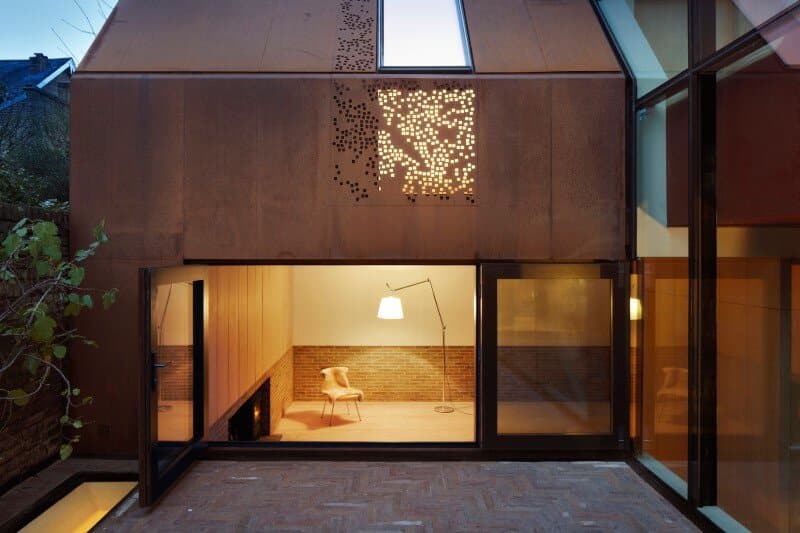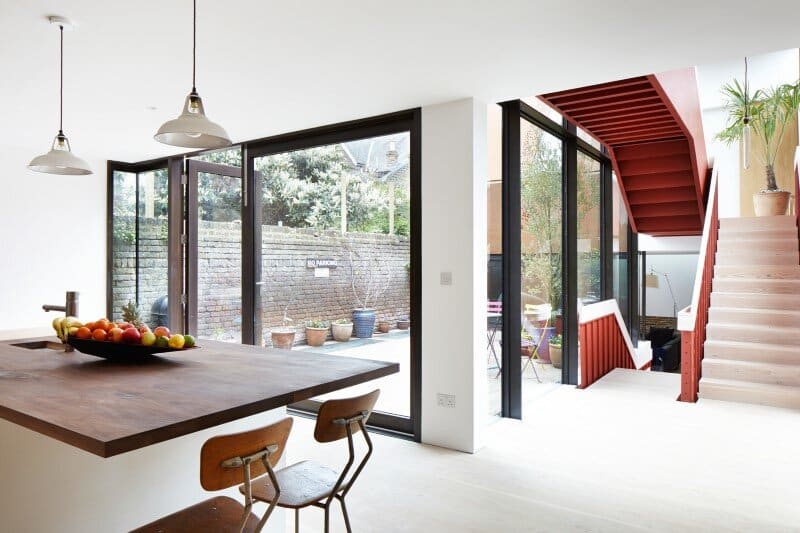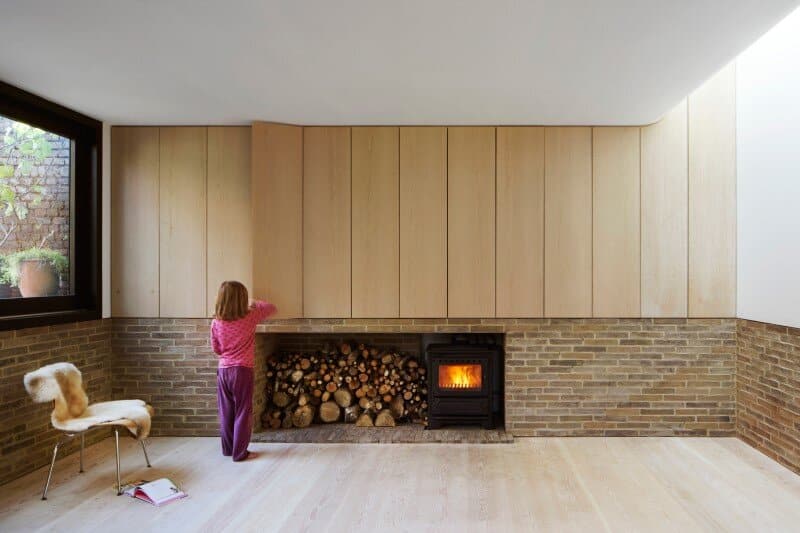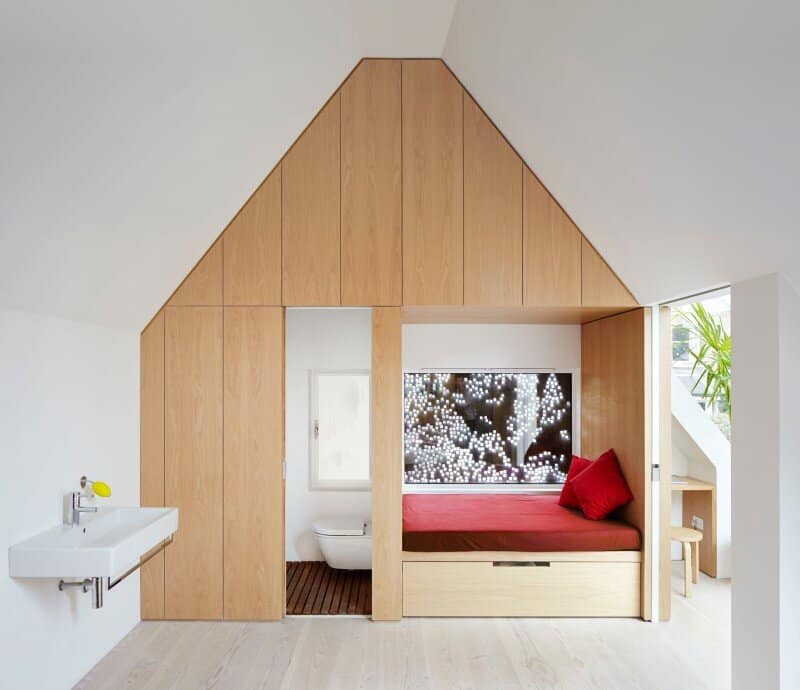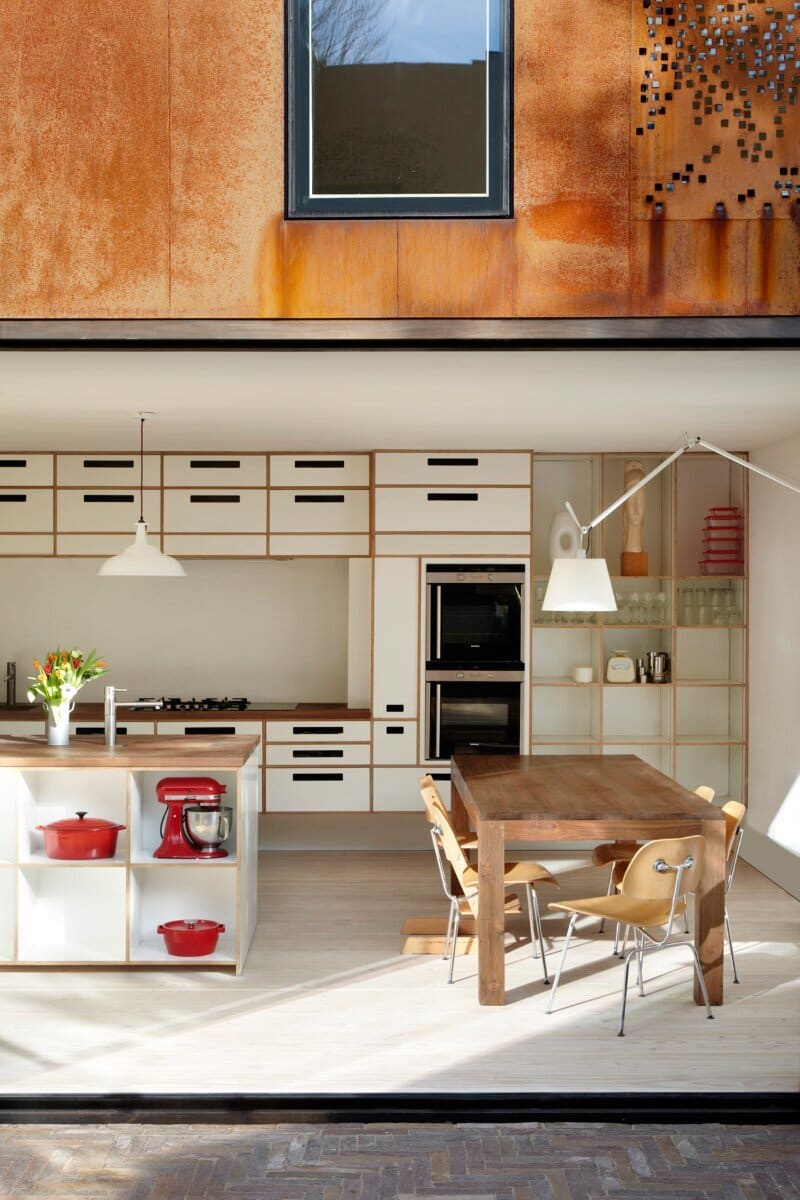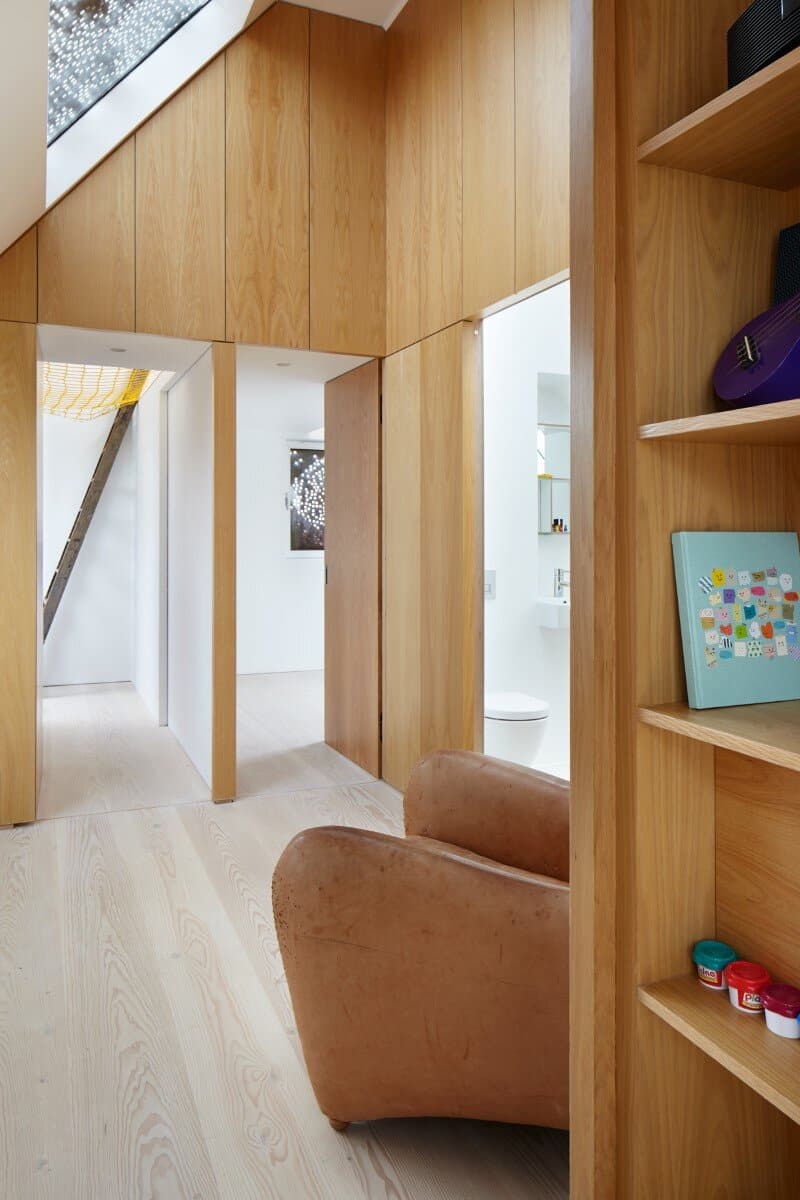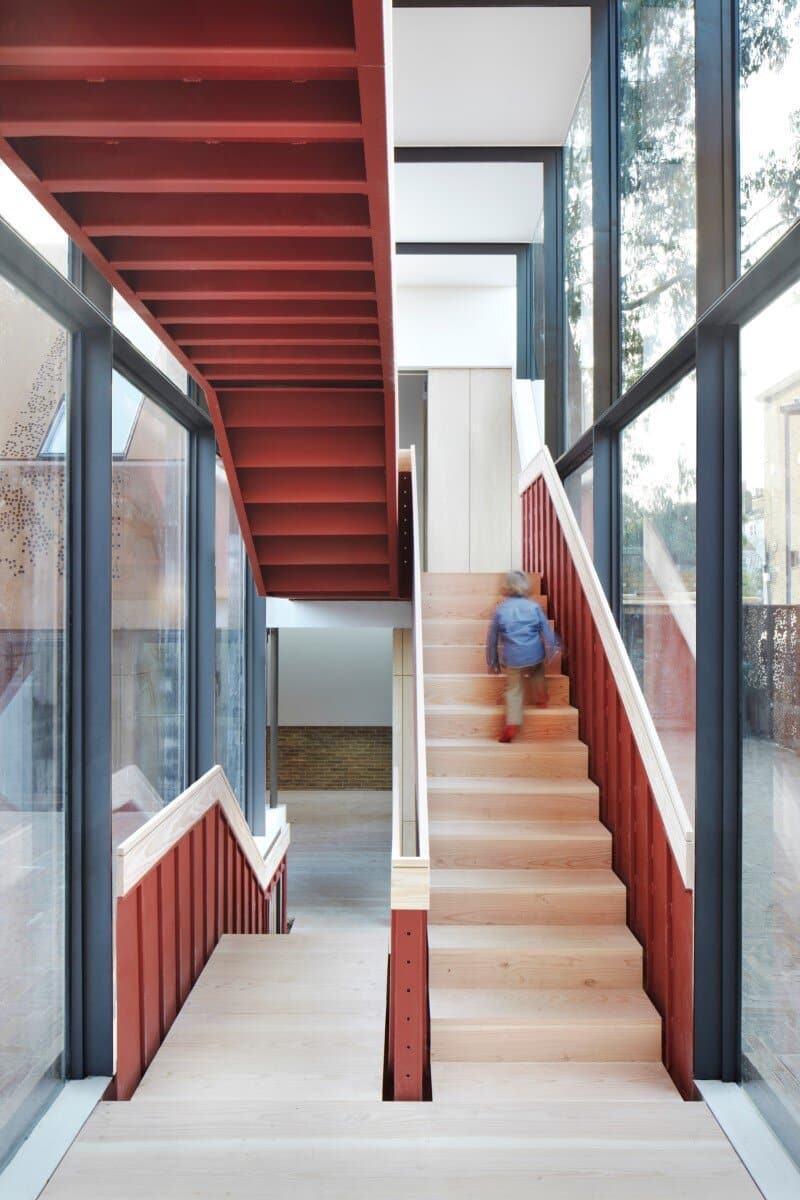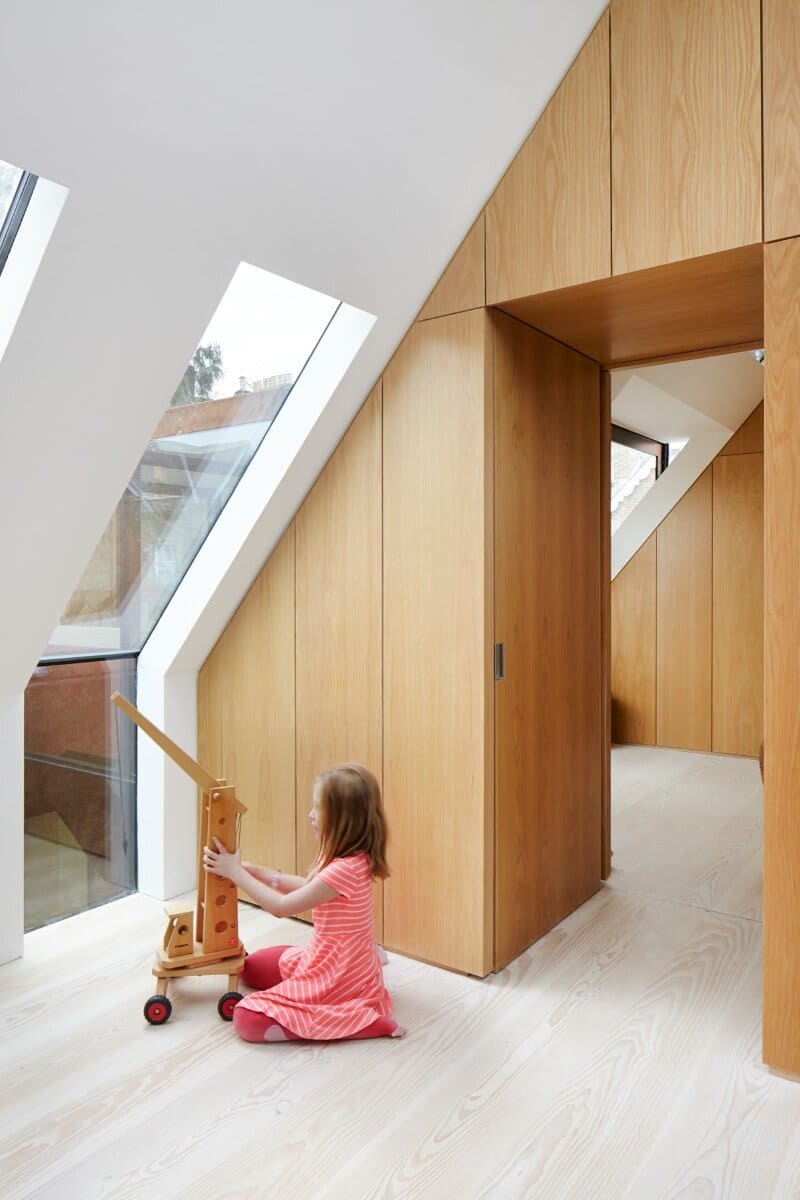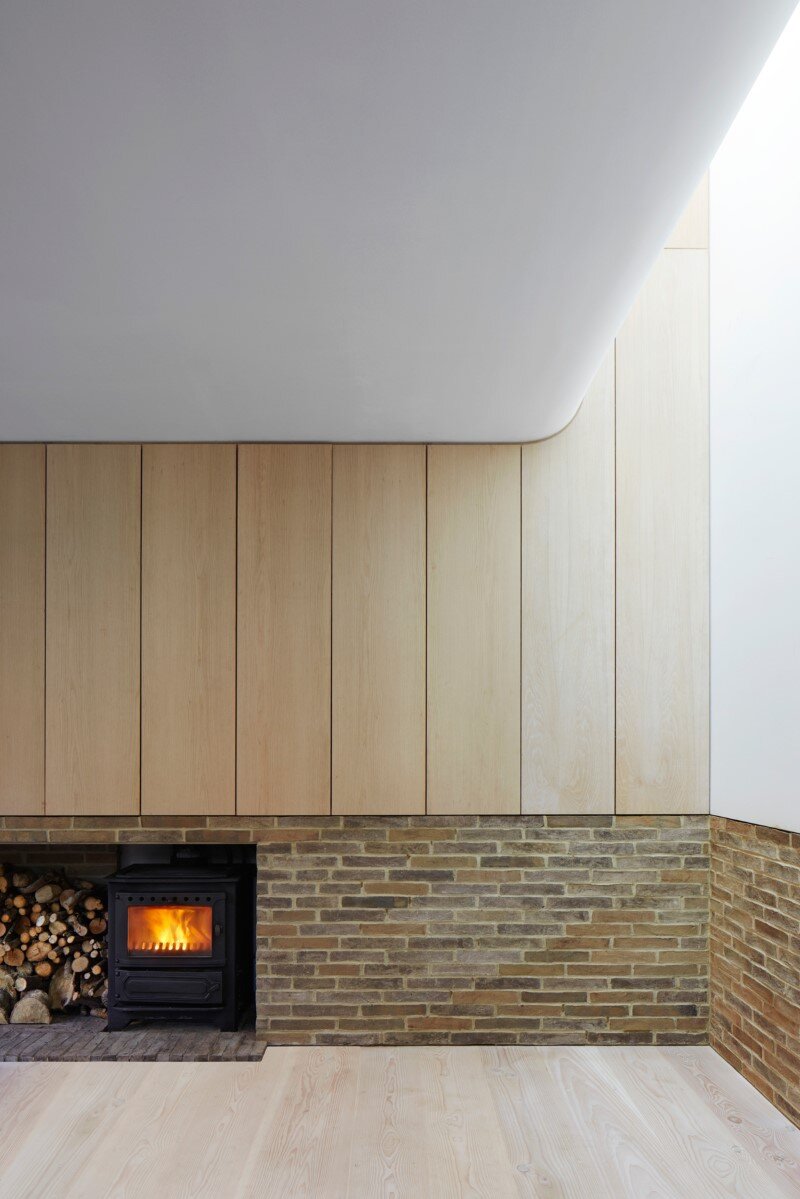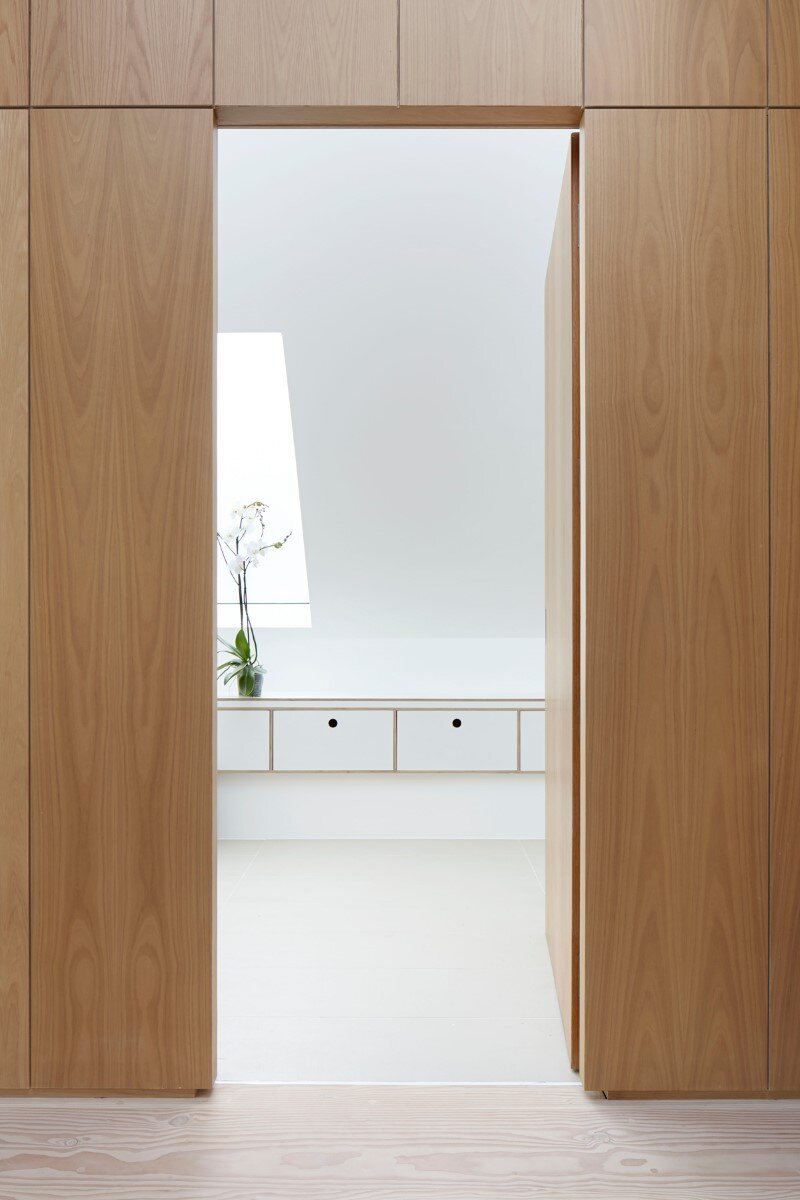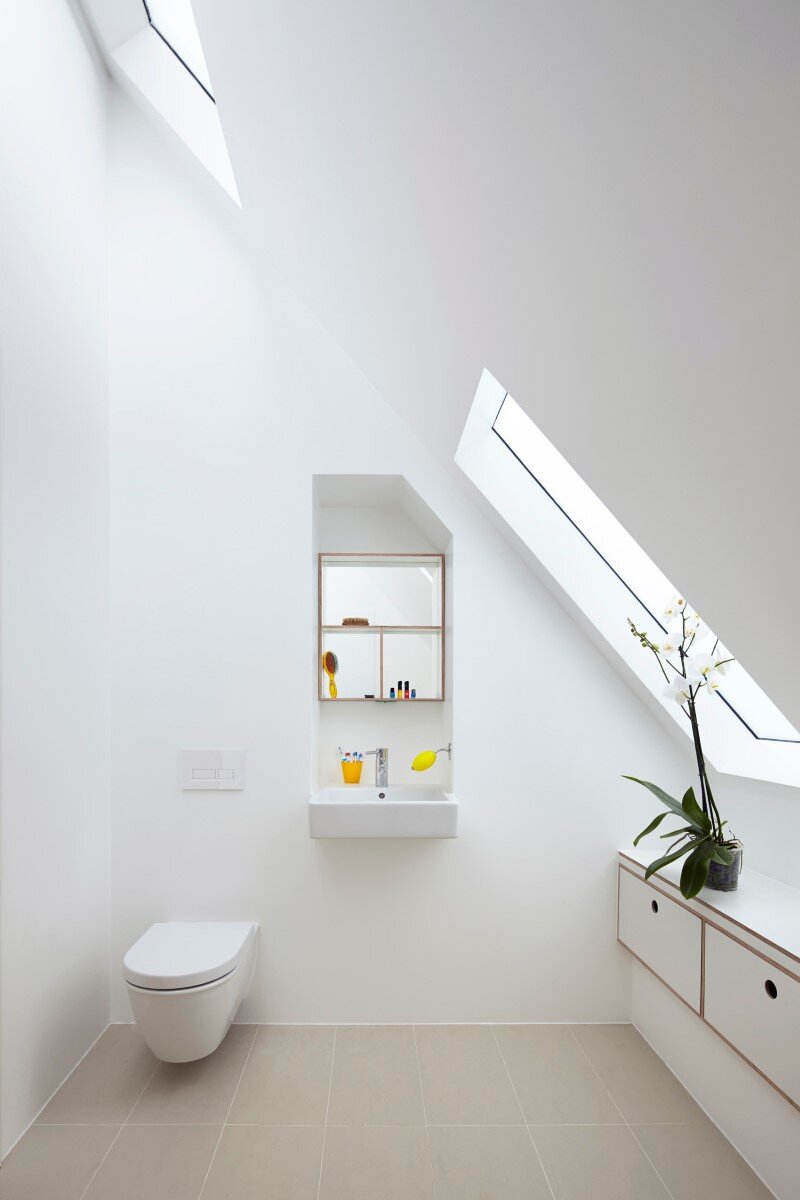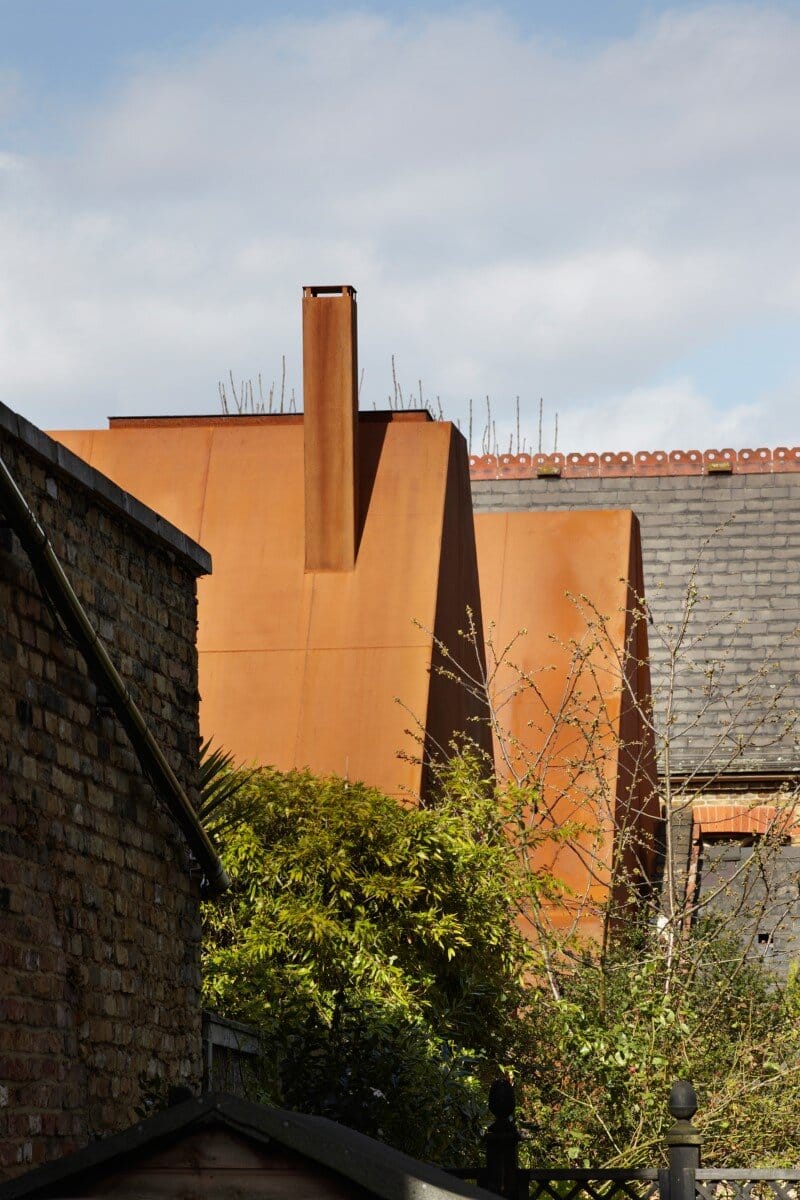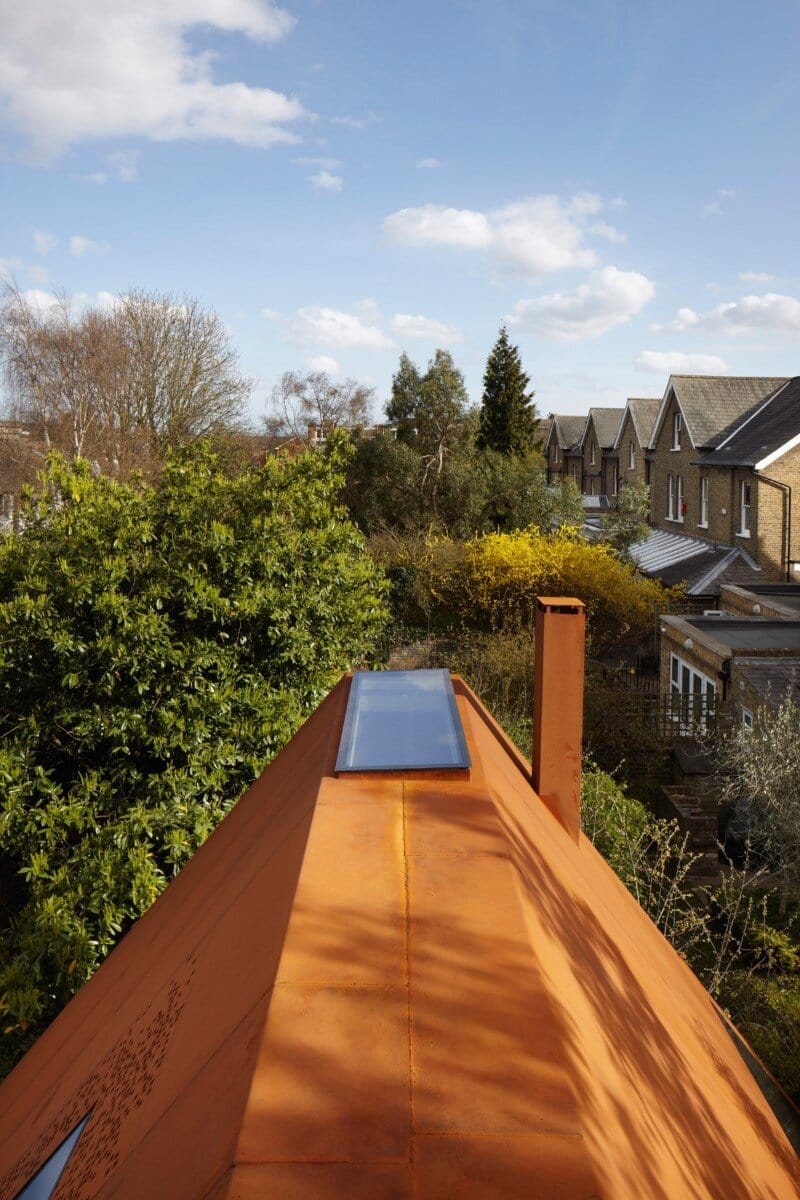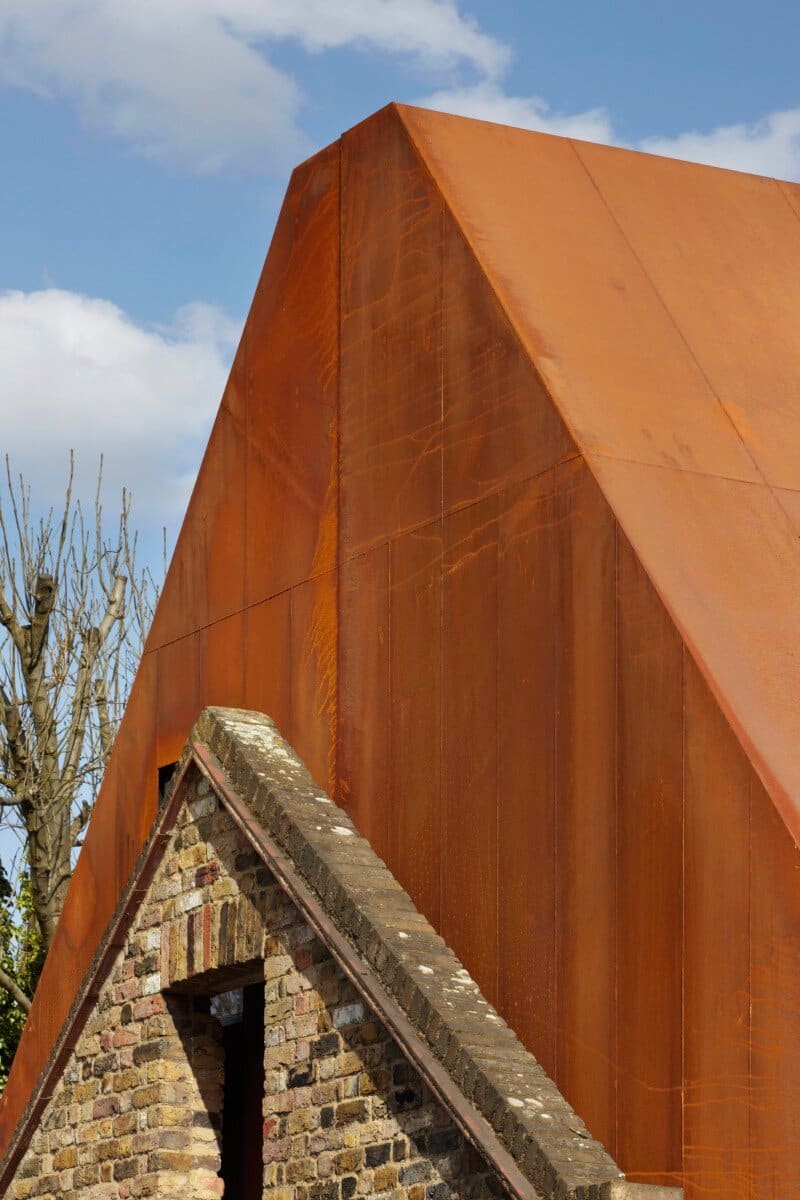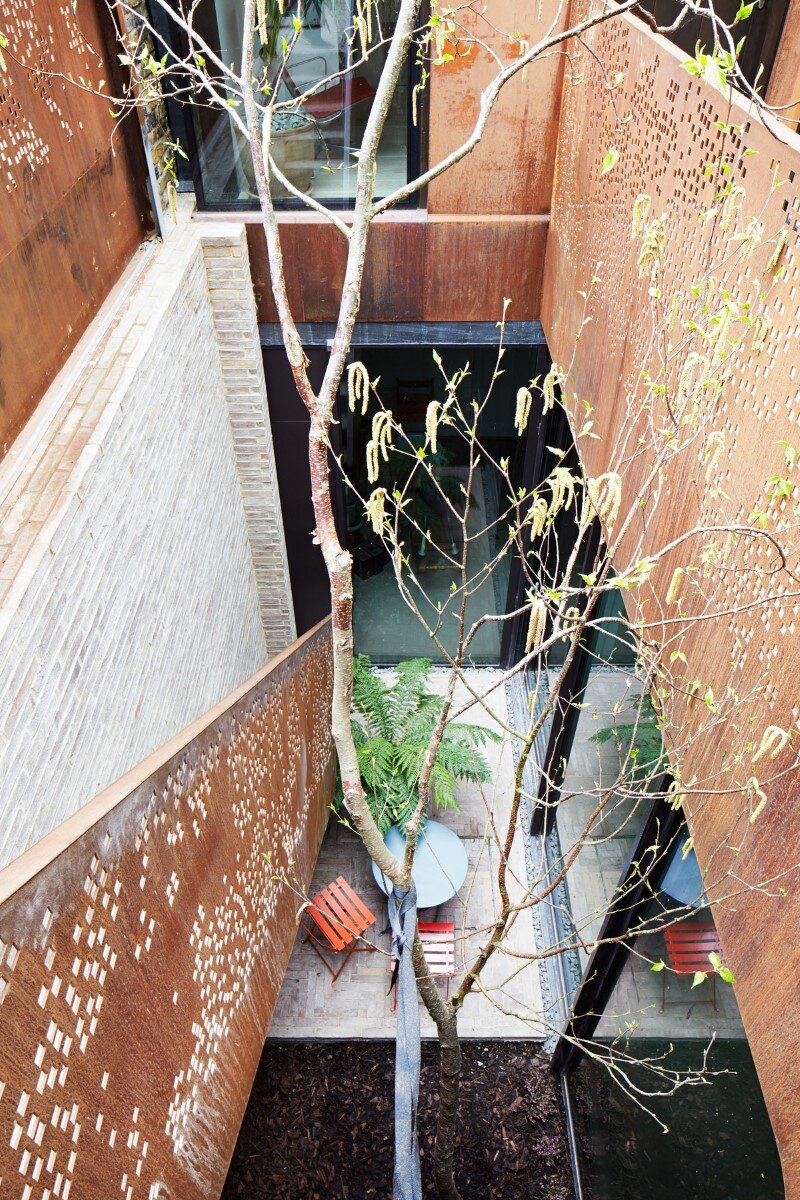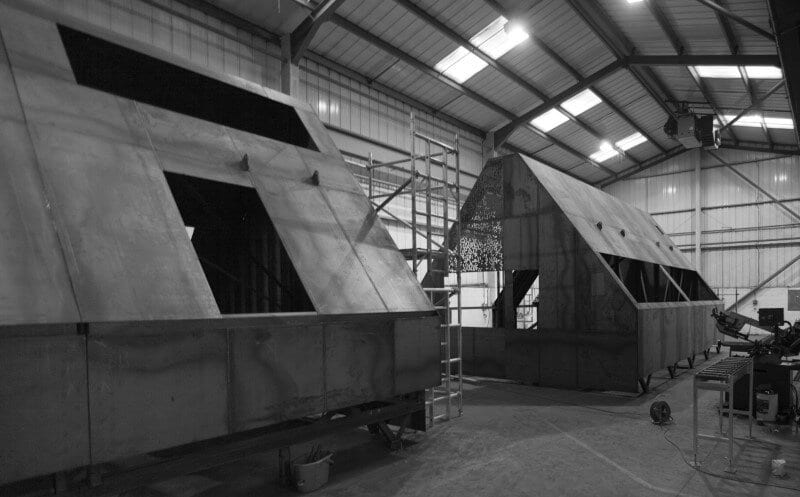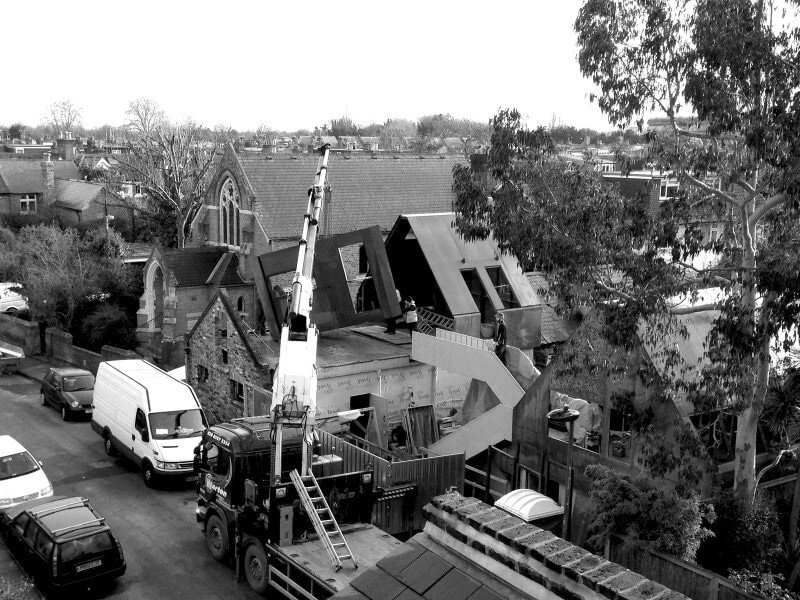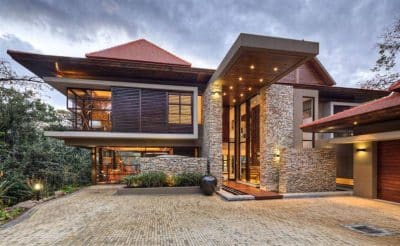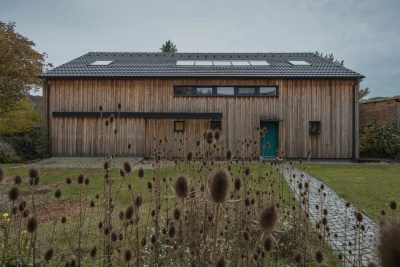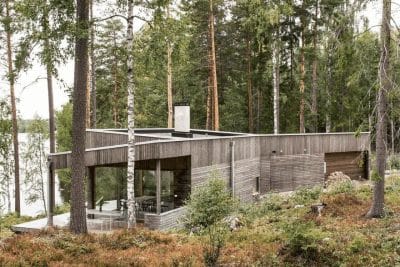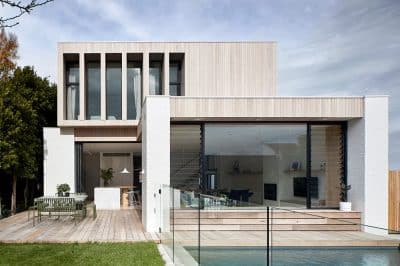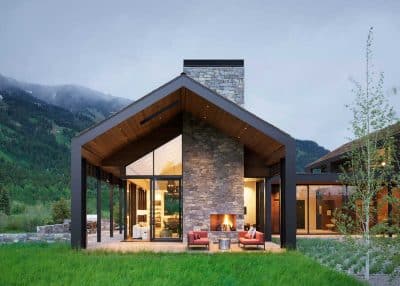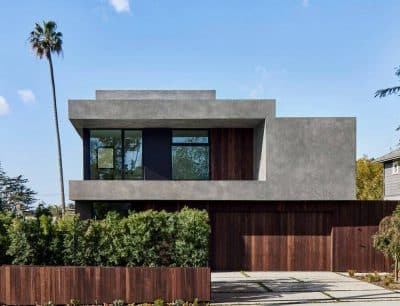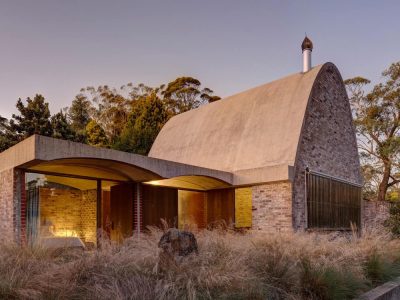Kew House is a family home in London designed by Piercy & Company.
Description by Piercy & Company: Set within the Kew Green Conservation Area of southwest London, the four bedroom family house is formed of two sculptural weathering steel volumes inserted behind a retained nineteenth century stable wall.
The brief evolved through a series of conversations with the clients which ranged over imagining the children running about the house, summer dinners spilling outside and the balance of quiet nooks with social spaces, to pragmatic concerns like drying laundry and how to build a boat in the basement. In response, Piercy&Company designed the house as a built diagram of the way the family wanted to use the spaces, with an internal landscape of alternative routes and levels connecting expressive spaces aimed at creating moments of delight for adults and children alike. First and foremost a family home, the spaces are intended to be informal but rich with incidental spaces, unexpected light and complex vertical volumes.
The house is formed of a simple plan to make the most of the constrained site, reduce the building’s mass in the streetscape and respond to the living patterns of the family. Consisting of two rectangles; one slightly smaller, set back and sunken 1m lower, the wings each have living spaces on the ground floor and bedrooms above. Connecting the wings is a glass encased circulation link which allows light to pour into the house whilst providing breathing space between internal spaces. Inside, oak veneer paneling and Dinesen flooring are the basis of a light, natural and refined palette of materials.
The two shells housing the main living and sleeping areas are formed of 4mm weathering steel, a hardworking combination of structure and façade. The weathering steel is maintenance free, essential for the enclosed site, and is softened by a patchwork of expressed welds and perforated panels. The deep orange tones of the weathering steel and the perforations within this skin echo the dappled light and autumnal palette of nearby Kew Gardens.
A list of planning constraints – including a conservation area context, a change of use and no access on three sides -formed a backdrop to the project. To overcome these challenges Piercy&Company inserted the house behind a retained 19th century brick gable end and split the house into twin gabled forms in keeping with local massing. The natural patina of the weathering steel with its marks, stains and perforations giving the surfaces different characters depending on the exposure and orientation, anchor the form into its context and impart a sense of permanence.
Kew House was an experimental build, driven by the architect’s and client’s shared interest in a ‘kit-of-parts’ approach and the self-build possibilities emerging from digital fabrication. The weathering steel shells were prefabricated in Hull and then craned into place and welded together. CNC milling and the on-site joinery workshop were used to create bespoke paneling, furniture and cabinetwork that could be fitted by the client and a small team of architecture graduates, testing the theory that digital fabrication can reduce the distance between design and production. The implications of this technology for house building are manifold with bespoke fit-out on a budget becoming increasingly viable. For more information visit Piercy & Company


